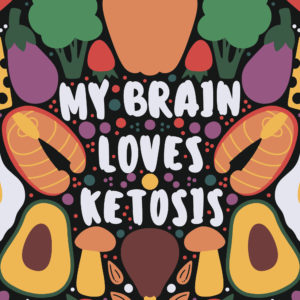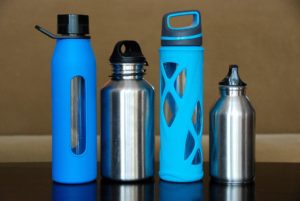This Keto basics for beginners guide is to help you understand the benefits of eating low carb. Keto is short for Ketosis, which is your body’s way of burning fat for fuel.
Burning excess body fat for fuel is extremely efficient. As well, the Keto diet has the added benefit of nourishing your brain, because the diet includes many healthy fats.
So if you want to eliminate body fat and brain fog, you are in the right place! Good on you for taking a first step towards improved health. And it’s as easy as eating real food.
Hello and welcome to Fearlessly Holistic
My name is Irma and I want to share my journey to improved health by eating whole foods, moving my body and eliminating stress as much as possible.
It is my hope to inspire you to make daily changes.
Why? Because eating fresh, seasonal food and getting some sunshine is the best way to increase longevity. But you do not want just a long life.
You want a quality long life.
My blog posts are my opinion and the results of things that I have tried that either worked for me or didn’t. My opinions are for informational purposes only and are not intended as medical advice. Medical advice should always be obtained from a qualified medical professional for any health conditions or symptoms associated with them. As well, there may be affiliate links in this post. Read more here.
Keto Diet Basics: What is Keto?

The Keto Diet (ketogenic diet) is a low-carb, high-fat diet. As a diet plan, it shares many of the same foods and drinks as the Atkins Diet – Induction Phase.
When I first tried low carb, I was on Atkins induction. I was shocked at how quickly my food cravings disappeared and how quickly weight loss happened. But I didn’t feel good.
It turns out that I am highly allergic to beef and egg whites, two staples of low carb. Now I eat mostly pork and seafood and I feel much better.
Keto Lesson #1: Not all food is good for all people.
I highly recommend Dr. Atkins New Diet Revolution as a resource on dietary ketosis. That book contains a plethora of low carb info.
What makes a Keto/Atkin’s Induction diet different is that it focuses on drastically reducing carbohydrate intake and replacing those carbohydrates with fat. This drastic reduction in carbohydrates puts your body into a metabolic state that is called ketosis.
Government guidelines have been recommending that the average person eat up to 300 grams of carbohydrate foods daily. Keto/Atkins recommends 20 grams per day, max.
The point of going into ketosis is to help your body become efficient at burning fat for energy.
While this is happening, your body turns the fat into ketones in the liver, supplying energy to the brain. This efficient system will allow you to eat less often and you will understand better how different foods affect your body.
Keto Lesson #2: Do not alter your diet without notifying your Doctor first.
Ketogenic diets can cause massive reductions in blood sugar and insulin levels. So while this can be a good thing for some people, it can cause problems for other people.
This mostly isn’t a problem if you eat enough food to keep your blood sugar stable.
Keto Basics: Why Go Keto?
There are a number of reasons why people go on a ketogenic diet. In most cases, it is to lose weight. In some cases, they are medically supervised and use the ketogenic diet as part of a treatment plan.
For me, I was getting more and more health issues and I wanted them to stop. I needed to do some kind of elimination diet to try to rule out problem foods.
I opted for a Ketovore diet, which is Keto with less veggies. It is a whole food diet with zero processed foods and I limited how many foods I ate in a day.
Turns out that I had several problem foods that I was eating regularly.
Weight Loss.
Due to lowered insulin levels and the body’s ability to burn stored fat, those who adhere to the diet find that they lose weight more quickly than with conventional diets.
The other benefit of Keto is how it re-shapes your body without exercise.
Keto weight loss is different. You may not see the scale move, but your clothes fit better and you have more energy for enjoying life.
You can, and should, do toning exercises, especially if you have a lot of body fat.
Weight training or yoga will help to give you muscle definition and your body will look more toned as the weight comes off. But you don’t need a gym pass; you will lose weight without exercise if you eat on-plan.
Cancer Prevention.
There are medical studies, that are showing good results with the ketogenic diet being an effective treatment for cancer. Combining Keto with Intermittent Fasting yields even better results.
Related Post: How To Do An Intermittent Fasting Diet Plan
There is an excellent series of posts written by Georgia Ede called What Causes Cancer?. The post breaks down Dr. Thomas Seyfried’s book “Cancer As A Metabolic Disease”, which is 438 pages. Dr. Seyfried believes that whole foods, and specifically a Keto diet, is helpful for treatment.
I highly recommend reading all 4 posts. If you’ve ever wondered why it seems like everyone is getting cancer, it may be that our high sugar (carbs) diet is the root cause.
Related Post: Break Sugar Addiction With A Detox Plan
This video explains where Dr. Seyfried is coming from:
Lower Cholesterol.
A modified ketogenic diet, what might be called a moderately low-carb diet, is beneficial for healthy adults who are at risk for metabolic syndrome, those struggling with losing weight or controlling levels of blood sugar.
Improve Cognitive Function.
Ketogenic diets are being used to help treat Alzheimer’s symptoms and those on the diet have shown a reduction in those symptoms and improved cognitive function.
Reduced Seizures in Epileptics.
The Epilepsy Foundation endorses the ketogenic diet because it has been shown to help control seizures in some people with epilepsy. Doctors usually recommend the ketogenic diet for children whose seizures have not responded to several different seizure medicines.
One of the main reasons for the effectiveness of the Keto diet for brain function issues is that fat nourishes your brain, which is mostly fat.
Makes sense right? Many specialists are testing Keto and Low Carb diets for Parkinson’s, Autism, and for people with chronic migraines.
As you can see, the ketogenic diet is more than just a low-carb/high-fat diet to lose weight. It is being studied and used now as a part of the treatment of many different diseases.

Keto Beginners Guide To A High Fat Diet
Side effects most people on the diet will experience:
Weight Loss: Due to lowered insulin levels and the body’s ability to burn stored fat, those who adhere to the diet find that they lose weight more quickly than with conventional diets.
Reduced Food Cravings: Eating higher amounts of fat and protein can kill cravings, because these foods are more satiating. Satiating means that they fill you up and keep you filled up longer than carbs, which get burned off quicker and must be replenished more often.
After the first three days, your cravings should be mostly gone. Supplement with better foods when a craving hits.
Clarity of Mind: An unbalanced diet can lead to lack of mental clarity, aka brain fog. People find it difficult to remember facts or struggle with staying focused on tasks. The keto diet, by helping the body burn fat as energy, sends energy to the brain and helps it to stay focused.
Improve Productivity: Many people are not aware that ketones are a more efficient energy source than glucose.
And for the brain, energy is everything.
This type of energy helps better protect the brain — and the rest of the body — from oxidative stress, which negatively affects mental performance and brain aging.
Improved mental performance, improved clarity, improved memory all combine to improve productivity.
Acne: Lower insulin levels and eating less sugar and processed foods help improve acne.
In addition, an increase in water intake will occur due to the lack of carbohydrates, offering good hydration of the skin.
Health conditions that can be improved, reduced, and in some cases cured when on the keto diet, include:

Heart Disease: In addition to weight loss, the risk factors of body fat, HDL levels, blood pressure and blood sugar are improved.
Cancer: There are medical studies, such as those conducted by the Department of Radiation Oncology at the Holden Comprehensive Cancer Center at the University of Iowa, and the National Institutes of Health’s National Institute of Neurological Disorders and Stroke, that are showing good results with the ketogenic diet being an effective treatment for several types of cancer and slow tumor growth.
Alzheimer’s disease: Ketogenic diets are being used to help treat Alzheimer’s symptoms. Those patients on the diet have shown a reduction in those symptoms and improved cognitive function.
Epilepsy: The Epilepsy Foundation endorses the ketogenic diet because it has been shown to help control seizures in some people with epilepsy. Doctors usually recommend the ketogenic diet for children whose seizures have not responded to several different seizure medicines.
While no research is conclusive that a ketogenic diet will reduce the symptoms or actually cure major health issues, there is evidence that it does not do any harm.
There is also no evidence that a Vegan diet can cure health issues either. It is all about what the right foods are for your body, not what the government wants to promote.
As for the side benefits of mental clarity and weight loss, those are shown to occur in otherwise healthy adults.
Keto Basics: Ketosis

It’s all about ketosis.
Attaining it and maintaining it.
First, the Keto Diet is similar to many low-carb, high-fat diets. But, there is a difference.
That difference is the intentional reduction of carbohydrates to the point of putting your body into ketosis.
What is Ketosis?
Ketosis is a process that the body does every day, regardless of the number of carbs you eat. Your body processes different types of nutrients into the fuels that it needs. Proteins, fats, and carbs are all processed for use. The ketogenic diet ramps up this process.
This process, ketosis, is a metabolic state where most of the body’s energy comes from ketone bodies in the blood. Ketone bodies are molecules that occur when your body burns fat as an energy source.
No other low-carb, high-fat diet does this.
Ketosis is a normal process that the body does every day, regardless of the number of carbs you eat.
Your body processes different types of nutrients into the fuels that it needs. Proteins, fats, and carbs are all processed for use.
The ketogenic diet, which is a low carb, high fat diet, ramps up this process.
When in ketosis, your body is in a metabolic state where most of the body’s energy comes from ketone bodies in the blood. Ketones are molecules that occur when your body burns fat as an energy source.
This is in contrast to a glycolysis state where blood glucose provides most of the energy.
So this means your body is burning fat for energy instead of carbohydrates.
Why does this happen? Our bodies normally run on glucose for energy. We can’t create glucose and only store 24 hours-worth in our muscles and liver.
Once this glucose is no longer available, we begin to burn stored fat.
The ketogenic diet, therefore, eliminates glucose and causes the body to burn stored fat
Because carbohydrate intake is low on Keto, the blood sugar (glucose) level is low, and the brain pulls from this alternative energy source, which is fat.
Before fats can be used by the body, the liver has to first convert them to ketones.
It is ketones that are used as energy for the body and brain when there is lack of glucose.
The ketogenic diet actually originated as a tool for treating neurological diseases, such as epilepsy. Studies have shown that this diet can have benefits for a wide variety of health conditions.
Keto Diet Basics: Macro Tracking
What Are Macros?

Macronutrients are the largest class of nutrients the body requires for energy. When we refer to “macros,” we are referring to these major nutrients.
Since “macros” means large, macronutrients are those nutrients we need in large amounts. There are three major macronutrients important to health and energy:
- Carbohydrates
- Healthy Fats
- Protein
On a low carb diet, the point is to limit the carbohydrate intake to force the body to burn fat for energy instead of carbs or sugar.
This is done by limiting your carbs to achieve a state of ketosis.
How to Track Macros
On a low-carb diet, it is important to track the net carbs. Your daily limit of 20 net carbs per day is a maximum number. This may sound restrictive, but since you eat more protein and fat, you won’t notice.
Remember, the Keto Diet is low-carb, not no-carb.
So there will be carbohydrates in the daily food that is eaten, just a much lower number than the average person eats.
A very low carb diet (less than 5 grams of carbs daily) is also known as the carnivore diet. Check out Dr. Shawn Baker’s website.
Replace the lost carbs with an increase in protein and fat intake.
This is why monitoring and tracking macro-nutrients each day helps to achieve success while on the keto diet.
It is also important to track the healthy fats, protein, and fiber because on the keto diet the goal is to maintain ketosis, the state of burning fat as energy.
A great starting point for tracking your macro’s is:
- Fat – 70% of the daily intake
- Protein – 25%
- Net carbs – 5%. Net carbs are found by deducting fiber from the carb count, giving you potentially more carb ‘wiggle’ room.
A great Macro Calculator is Cron-o-Meter. (free signup)
This app is a great way to keep up with your progress. It lets you track exercise, calories burned, water intake, and biometrics (body measurements).
You can also input custom foods and recipes (helpful if you eat the same foods often).
Open the app, then enter the food group you will be eating from, the serving size, and how it will be prepared.
You don’t have to be fancy; I use words like “beef, roasted” and then look to see what’s in the database that’s a close match.
Cron-o-meter will save the information so that you can enter again another time. It might sound boring, or at least it did to me, that eating the same food over and over is dull as dishwater.
But, I have settled into eating mostly the same foods daily. It’s just easier. And not as boring as I thought. I switch up my veggies and how I prepare meat, use different sauces, and test out fun foods (keto chaffle anyone? It’s really yummy!)
By the end of the first day of meals, you will see how well you were able to stay on track with your keto diet plan.
I highly recommend a nutrition tracking app for the first 30 days
There are many health benefits experienced by those on the ketogenic diet. The basis of the diet is that it is designed to get a certain response from the body.

Eating different percentages of these macro-nutrients give different results for different people.
For example, the Standard American Diet (SAD) is 50% carbs, 15% protein, and 35% fat; this is resulting in rampant obesity and Type II Diabetes.
It doesn’t help that many of the high carb foods that people eat are processed and contain lab created items dubiously called ‘food’.
Or that most of the fats that people eat are from Industrial Seed Oils. ewwwwwww.
Much the same way that most bottled water contains plastic particles, lab created foods and food additives add things to our body that are just not healthy
Keto Basics: Why You Lose Weight On A Keto Diet
“Regular” Diets Focus on Calories-in-calories-out
The ‘regular’ way to lose weight over a long period of time is to reduce the number of calories you take in and increase the number of calories you use as fuel in your daily activity.
This concept has always been theoretical and based on math, not human beings. It assumes everyone is the same.
Science has discovered that this actually doesn’t work as well as we would like it to.
That is because calorie counting does not address cravings nor does it offer guidance on what type of food to eat for long term weight loss.
As well, if your body does not like a specific food that is recommended, you won’t lose weight. You will have more inflammation though.
Additional science has taught us that processed carbohydrates and sugar foods are what need to be removed from our diet for long term weight loss.
From Burning Sugar to Burning Fat
The ketogenic diet works for weight loss because the intention is to force the body into ketosis.
This is not a bad thing!
It is a process, a metabolic state where most of the body’s energy comes from ketone bodies in the blood. Ketone bodies are molecules that occur when your body burns fat as an energy source.
So what you are doing is setting up your body to stop using sugar (glucose) for energy and start using fat for energy.
You will hear many medical professionals telling you that glucose is the preferred fuel of the body, but this is simply not true.
We have only had the technology for refrigerators and home freezers for the last 100 years. Corner stores and fast food are also new inventions.
So how did people get fresh fruit and veggies many centuries ago? Answer: they didn’t.
They ate meat and any root veggies that they could store.
So how could we survive as a species if we couldn’t eat six small meals a day?
We ate whatever we hunted or gathered, whenever we came across it.
Eating ketogenically makes more sense than eating a lot of grains, from an evolutionary standpoint.
A high fat, higher protein diet is more satiating.
Many people who eat keto report that they can fast for long periods once they are in ketosis.
This makes sense when you realize that people might not find an animal to kill right away. It makes more sense that we would find odd edible plants on our journey to get meat.
Eating plants gives us just enough energy to hunt meat.
Why does weight loss happen?
We can’t create glucose and only store 24 hours-worth in our muscles and liver. Once this glucose is no longer available, we begin to burn stored fat.
The ketogenic diet, by eliminating glucose, causes the body to burn stored fat. And fat is what we want to lose.
Less Sugar Means Less Water Weight

Surprise! There is a strong relationship between water retention and glycogen (glucose) that is stored in the body.
If your body manages to store some extra glycogen, you also increase water retention. This happens literally from one day to the next.
Hence, when you eliminate or reduce sugar from your diet, you reduce the likelihood of carrying extra weight that is simply extra water.
Reduced Appetite
Ketosis does not completely reduce your appetite. Your body is put in a state of not wanting to eat or overeat, making it much easier to lose weight.
The heart, brain, and other muscle tissues “prefer” to burn ketones because this allows the body to conserve blood sugar. As a side effect, this is definitely one of the better ones.
Conclusion
We got a lot done today! I hope that you enjoyed learning about the Keto diet. Next week we go deep into Ketosis (ha!), Keto flu, and all the amazing food you get to eat, plus basic meal plans. Check back for the post Easy Ketogenic Diet Plan: What To Eat and Why.
Holistic approaches never just address symptoms of specific health problems, but instead aim to return or keep the patient in a state of balanced health between mind, body, and spirit. Combining IF with Keto or Ketovore creates harmony for your health.
Holism targets overall wellness, and when we are well, we only get better with age.
Please share this post with anyone who can benefit from it. Sharing is caring!
And follow me on Pinterest!
Until next time, here’s to our health!
-Irma


